In recent years, the demand for convenient and high-quality kitchen appliances has surged, with pizza makers becoming a staple in many households. This surge has not only been driven by the growing popularity of pizza culture but also by the evolving expectations of consumers seeking efficient and enjoyable cooking experiences. As the market continues to expand, the importance of adhering to international regulations, such as the RoHS directive, cannot be overstated. This article delves into the intricacies of RoHS compliance for pizza makers, exploring the challenges, opportunities, and the path to successful exportation in a highly competitive global market.
The Rise of the Pizza Maker Market in Europe and America
The pizza maker market has experienced a remarkable surge in Europe and America, transforming the way consumers enjoy their favorite dish at home. With the convenience of homemade pizza now within reach, this trend has been fueled by several key factors.
Gone are the days when ordering a pizza meant waiting for delivery or heading to a restaurant. The advent of compact, efficient pizza makers has revolutionized the culinary landscape. These appliances have become a staple in many households, offering the joy of homemade pizza in just a few minutes.
One of the primary drivers behind this growth is the increasing popularity of health-conscious eating habits. Consumers are seeking out healthier alternatives to restaurant meals, and homemade pizza allows for greater control over ingredients, including whole-grain dough, fresh vegetables, and lean proteins.
In Europe, the market for pizza makers has seen a significant uptick, with Italy leading the charge. The country’s rich culinary heritage and love for pizza have made it a natural fit for the home pizza-making trend. Italian brands have capitalized on this by offering a wide range of high-quality, authentic pizza makers that cater to both amateur chefs and seasoned pizzaiolos.
Similarly, in America, the pizza maker market has expanded rapidly. The rise of food blogs, social media influencers, and cooking shows has brought homemade pizza into the spotlight. The trend has been further bolstered by the convenience of online shopping, where customers can easily find and purchase pizza makers that suit their needs.
The versatility of pizza makers is another factor contributing to their popularity. These appliances can be used to make a variety of pizza styles, from classic Margherita to gourmet creations with unique toppings. This flexibility has allowed pizza makers to appeal to a broad audience, including those who enjoy experimenting with different flavors and textures.
Moreover, the technological advancements in pizza makers have made them more accessible and user-friendly. Modern models often come with features like automatic temperature control, non-stick surfaces, and built-in timers, ensuring that even the most novice cooks can achieve restaurant-quality results.
As the market continues to grow, manufacturers are responding by introducing new and innovative products. Smart pizza makers that can connect to mobile devices and provide recipes and cooking tips are becoming increasingly popular. These devices not only make cooking easier but also add a fun, interactive element to the pizza-making process.
Another significant trend is the focus on sustainability and eco-friendly appliances. As consumers become more environmentally conscious, they are looking for products that align with their values. Pizza makers made from recycled materials or with energy-saving features are gaining traction in the market.
Despite the rapid growth, the pizza maker market in Europe and America is not without its challenges. Manufacturers must navigate the complexities of regulatory compliance, particularly when it comes to safety standards and certifications. Ensuring that their products meet the stringent requirements of RoHS (Restriction of Hazardous Substances) is crucial for export success.
In conclusion, the pizza maker market in Europe and America has seen a remarkable rise, driven by health trends, technological advancements, and consumer demand for convenience and quality. As the market continues to evolve, it will be interesting to see how manufacturers adapt to new consumer preferences and industry standards, ultimately shaping the future of home pizza making.
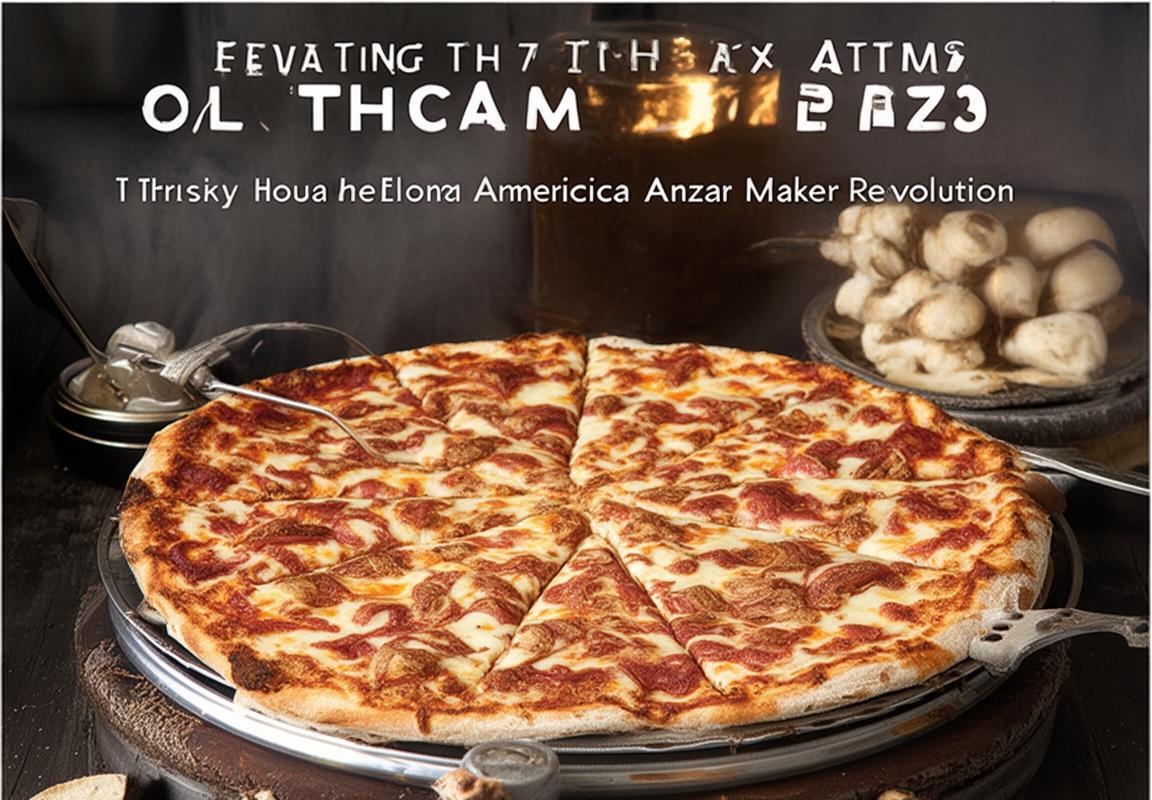
Understanding RoHS Compliance in Kitchen Appliances
In the world of kitchen appliances, ensuring compliance with regulations like the Restriction of Hazardous Substances (RoHS) has become a cornerstone for manufacturers looking to export their products. Understanding RoHS compliance in kitchen appliances is not just about meeting legal requirements; it’s about prioritizing consumer safety and environmental responsibility.
RoHS, also known as the “Euostandard,” is a directive that restricts the use of certain hazardous materials in electrical and electronic equipment. These substances include lead, cadmium, mercury, hexavalent chromium, polybrominated biphenyls (PBBs), and polybrominated diphenyl ethers (PBDEs). The directive aims to reduce the environmental impact of electronic waste and prevent the release of these harmful substances into the environment.
For kitchen appliances, the impact of RoHS is profound. Many modern kitchen devices, such as ovens, microwaves, and toasters, contain electronic components that could potentially include the restricted substances. Understanding the specifics of RoHS compliance is crucial to ensure that these appliances are safe for use and do not contribute to environmental pollution.
One of the first steps in ensuring RoHS compliance is to identify the components and materials that are subject to restriction. This requires a thorough examination of the supply chain, as these substances can be present in various parts of an appliance, from the internal wiring to the surface coatings. For instance, lead solder is commonly used in electronics manufacturing and is a key substance regulated under RoHS.
Testing and certification are integral to RoHS compliance. Appliances must undergo rigorous testing to confirm that they meet the strict concentration limits set by the directive. This involves chemical analysis, which can be a complex and costly process. However, the peace of mind that comes with knowing your product is safe for both consumers and the environment is invaluable.
Compliance with RoHS also requires documentation. Manufacturers must maintain detailed records of the materials used in their appliances, including the certification of compliance for each component. This paperwork can be extensive, especially for products with numerous parts. Yet, it is essential for proving compliance to regulatory bodies and ensuring that the product can be exported to European markets, which strictly enforce RoHS standards.
For kitchen appliance manufacturers, the design process must incorporate RoHS considerations from the outset. Engineers must choose materials and components that are free from restricted substances, or they must find alternatives that are RoHS-compliant. This often requires a redesign of certain parts or the use of newer, less toxic materials that can achieve the same functionality.
The environmental benefits of RoHS compliance are clear. By reducing the use of hazardous substances, kitchen appliances are less likely to contaminate the environment when they are eventually disposed of. This not only helps protect ecosystems but also supports the global movement towards sustainable production and consumption.
On the consumer side, RoHS compliance means peace of mind. Consumers can trust that the kitchen appliances they purchase are safe to use, free from the risk of exposure to harmful chemicals. This trust is crucial in a market where product safety concerns are a top priority for many consumers.
However, there are challenges. The cost of materials that are RoHS-compliant can be higher than those that are not. This can impact the overall cost of the appliance, potentially making it less attractive to price-sensitive consumers. Additionally, the complexity of the certification process can add to the time and expense of bringing a product to market.
Despite these challenges, the demand for RoHS-compliant kitchen appliances continues to grow. As awareness of environmental issues and health concerns increases, consumers are more likely to seek out products that are not only functional but also adhere to strict safety and environmental standards.
In conclusion, understanding RoHS compliance in kitchen appliances is about more than just adhering to a legal directive. It’s about creating a safer, more sustainable future. By prioritizing RoHS compliance, manufacturers can ensure that their products are safe for consumers, environmentally friendly, and marketable in regions that demand these standards.

Key Features of a RoHS-Compliant Pizza Maker
In the bustling world of kitchen appliances, the rise of the pizza maker has been nothing short of a revolution. These compact devices have transformed the way households enjoy their favorite pizza, offering the convenience of homemade quality right in the comfort of your own kitchen. Among the myriad of pizza makers available, those that adhere to the RoHS (Restriction of Hazardous Substances) directive stand out. Let’s delve into the key features that make a pizza maker RoHS-compliant.
-
Certification and LabelingRoHS-compliant pizza makers bear a clear label or certification mark, typically a CE mark, indicating that they meet the European Union’s standards for hazardous substances. This certification ensures that the product has been tested and complies with the restrictions on the use of certain hazardous materials.
-
Hazardous Substance RestrictionsA RoHS-compliant pizza maker must adhere to strict regulations that limit the use of six hazardous substances: lead (Pb), mercury (Hg), cadmium (Cd), hexavalent chromium (Cr6+), polybrominated biphenyls (PBBs), and polybrominated diphenyl ethers (PBDEs). This means that the internal components, including electrical and electronic parts, are free from these substances or are at concentrations well below the permitted levels.
-
Non-Toxic MaterialsThe materials used in the construction of a RoHS-compliant pizza maker are carefully selected to ensure safety. This includes using non-toxic plastics, metals that are free from heavy metals, and coatings that do not contain harmful chemicals. The aim is to minimize any potential health risks to users and the environment.
-
Design for SafetyA key feature of these pizza makers is their design, which not only focuses on ease of use but also on safety. This includes heat-resistant handles and materials that prevent overheating, ensuring that the user is not exposed to any potential hazards during operation.
-
Electrical ComponentsThe electrical components within a RoHS-compliant pizza maker are designed to prevent the release of hazardous substances. This includes the use of lead-free solders, which are safer for both the user and the environment. Additionally, the appliance’s circuitry is designed to be efficient and to reduce the risk of electrical fires.
-
Energy EfficiencyRoHS-compliant pizza makers are often designed with energy efficiency in mind. This not only helps to reduce electricity costs but also contributes to a more sustainable lifestyle. The energy-efficient design also reduces the appliance’s overall environmental impact.
-
Ease of Maintenance and DisposalThese pizza makers are designed for easy maintenance and disposal. The components are often designed to be easily removed for cleaning, which can help prevent the build-up of harmful substances. Moreover, the materials used in the appliance should be recyclable, facilitating proper disposal when the product reaches the end of its life cycle.
-
Testing and Quality ControlRoHS compliance is not just about meeting a set of standards; it’s also about ensuring the quality and safety of the product. Manufacturers must undergo rigorous testing to ensure that their pizza makers meet the required standards, which includes testing for the presence of hazardous substances.
-
User Manual and Safety InformationA RoHS-compliant pizza maker comes with a comprehensive user manual that includes safety instructions. This manual will inform users about the appliance’s features, maintenance tips, and the importance of following safety guidelines to prevent accidents.
-
Warranty and Customer SupportManufacturers of RoHS-compliant pizza makers often offer a warranty to ensure that customers have peace of mind. In the event that a problem arises with the appliance, there is a safety net in place through customer support and service centers.
In summary, a RoHS-compliant pizza maker stands out for its adherence to strict regulations, the use of non-toxic materials, and its focus on user safety and environmental protection. These features not only make it a responsible choice for consumers but also a symbol of quality and trust in the kitchen appliance market.
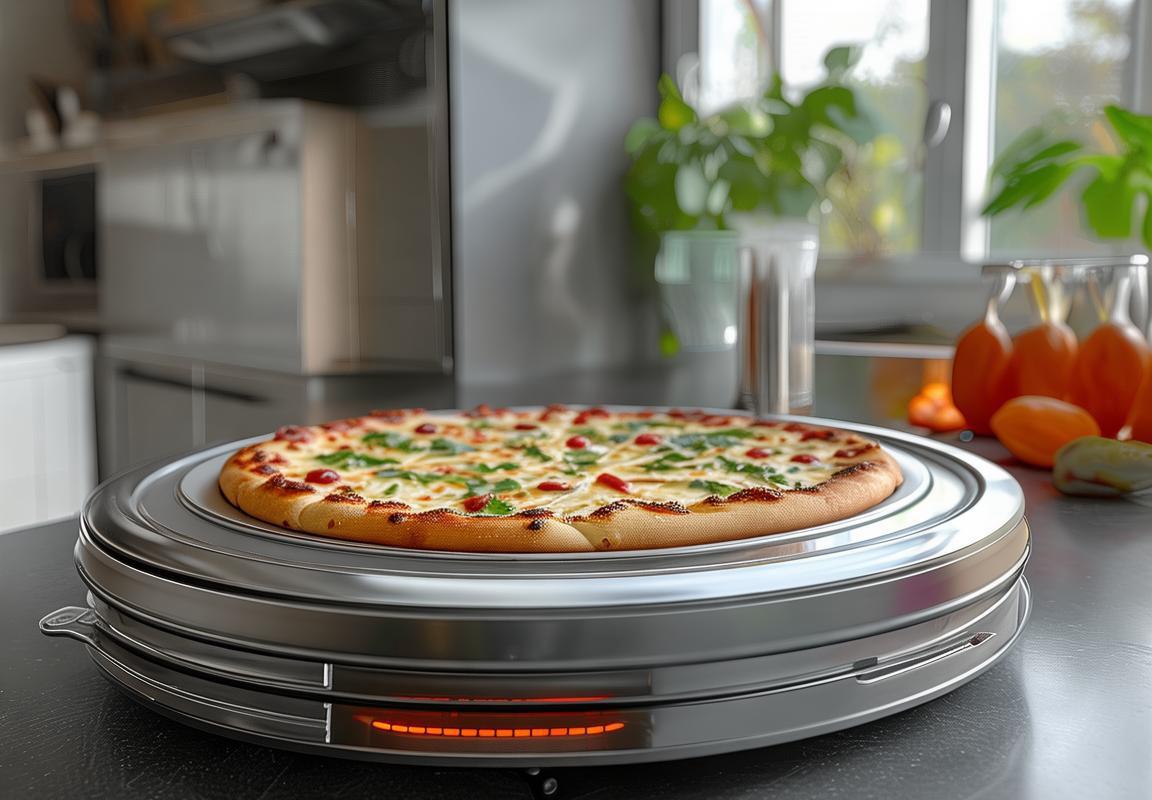
Market Trends and Consumer Preferences
In the ever-evolving landscape of kitchen appliances, understanding the latest market trends and consumer preferences is crucial for manufacturers looking to stay ahead. From smart features to eco-friendly designs, the market is witnessing a transformation that shapes the way we interact with our kitchen gadgets.
Gone are the days when a pizza maker was just a simple countertop appliance. Today, consumers are seeking more than just a device that cooks a decent pie; they’re looking for innovation, convenience, and a touch of personalization. Let’s delve into the key trends and preferences that are currently shaping the pizza maker market.
The surge in health consciousness has prompted a shift towards healthier eating habits, and this extends to kitchen appliances as well. Consumers are now more likely to choose a pizza maker that allows for healthier toppings and cooking options. This means appliances that can handle whole grain crusts, fresh vegetables, and lower-fat cheese are gaining popularity.
Smart technology has made its way into the kitchen, and pizza makers are no exception. Modern pizza makers often come with features like built-in timers, temperature controls, and even Wi-Fi connectivity. Users can now set their desired cooking times and temperatures remotely, and some models can even send notifications to your smartphone when the pizza is ready.
The convenience factor is another driving force in the market. Consumers are looking for appliances that can simplify their lives without compromising on quality. Compact and easy-to-use designs, as well as those that offer a variety of cooking functions, are becoming more sought after. For instance, multi-purpose pizza makers that can also cook other dishes like bread or even desserts are capturing the interest of busy households.
Eco-consciousness is on the rise, and it’s influencing how consumers perceive kitchen appliances. Environmentally friendly features such as energy efficiency, recyclable materials, and the absence of harmful chemicals are becoming important considerations. Pizza makers that are energy-saving and use eco-friendly materials are more likely to appeal to the environmentally conscious consumer.
Personalization is another trend that’s shaping the market. Customizable settings, like adjustable cooking temperatures and sizes, allow users to tailor their pizza-making experience to their preferences. Additionally, some models offer unique features like non-stick surfaces or stone bases that mimic the traditional pizza oven’s flavor profile.
Safety is a non-negotiable factor in any kitchen appliance, and pizza makers are no different. Consumers are increasingly aware of the importance of RoHS (Restriction of Hazardous Substances) compliance, which ensures that appliances are free from dangerous substances like lead, cadmium, mercury, hexavalent chromium, and polybrominated biphenyls (PBBs). A RoHS-compliant pizza maker not only ensures safety but also adds credibility to the brand.
As the market becomes more global, there’s also a trend towards cultural diversity. Pizza makers that cater to various cultural preferences, such as those with settings for different dough types or cooking styles, are gaining traction. This diversity in offerings reflects the global nature of today’s consumer base.
In the realm of aesthetics, there’s a growing preference for sleek and modern designs. Pizza makers that blend in with contemporary kitchen decor, offering a stylish and functional piece of kitchenware, are becoming more desirable. The aesthetic appeal is not just about looks; it’s about the overall kitchen experience and how the appliance complements the space.
Lastly, the rise of online shopping has changed the way consumers discover and purchase kitchen appliances. They’re looking for detailed product information, customer reviews, and easy-to-navigate online stores. The ability to read about other users’ experiences and see detailed product specifications is a key factor in the buying decision process.
In conclusion, the pizza maker market is evolving rapidly, with an emphasis on health, convenience, eco-friendliness, personalization, safety, cultural diversity, aesthetics, and the online shopping experience. By understanding these trends and preferences, manufacturers can create products that resonate with today’s consumer, ensuring their success in a competitive marketplace.
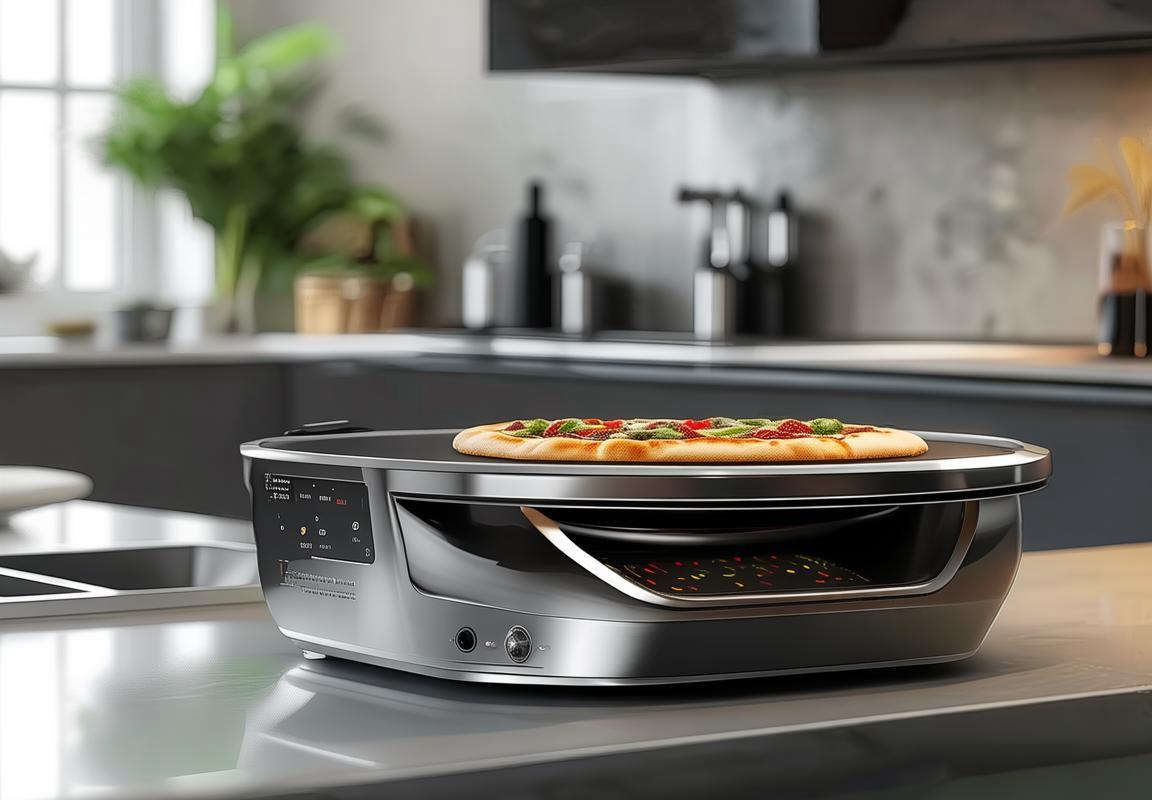
Challenges and Opportunities in Exporting RoHS-Compliant Pizza Makers
Navigating the complexities of international trade, especially in the kitchen appliance sector, requires a keen understanding of the challenges and opportunities that arise when exporting RoHS-compliant pizza makers. Here’s a closer look at the intricacies involved:
-
Compliance with International StandardsMaintaining compliance with the RoHS (Restriction of Hazardous Substances) directive is a cornerstone of exporting pizza makers. This means ensuring that all components meet strict limits on the use of hazardous materials such as lead, mercury, cadmium, hexavalent chromium, and polybrominated biphenyls (PBBs) and polybrominated diphenyl ethers (PBDEs).
-
Market Research and LocalizationOne of the biggest challenges is understanding the local market demands and adapting products accordingly. This involves thorough market research to identify preferences, such as power consumption, size, and features, and then tailoring the pizza makers to meet those needs.
-
Supply Chain ManagementThe supply chain must be meticulously managed to ensure that all components are RoHS compliant. This includes verifying the compliance of raw materials, components, and sub-assemblies from suppliers across various countries, which can be a complex and time-consuming process.
-
Certification and DocumentationSecuring the necessary certifications, such as CE marking, is crucial for exporting RoHS-compliant pizza makers. This involves not only meeting the technical specifications but also ensuring that all documentation is up-to-date and accurately reflects the product’s compliance.
-
Pricing and Cost ManagementExporting with RoHS compliance often means higher costs due to the use of alternative, more expensive materials and rigorous quality control processes. Balancing these increased costs with competitive pricing can be a delicate challenge.
-
Distribution and LogisticsFinding reliable distribution channels and managing logistics can be challenging. Ensuring that the pizza makers are well-packaged to prevent damage during transit is essential, especially since these appliances are often heavy and fragile.
-
Cultural Differences and Consumer BehaviorUnderstanding cultural nuances can be a significant opportunity. Different regions may have unique preferences or cooking habits that can influence the design and features of a pizza maker. Adapting to these differences can open up new markets.
-
Technological InnovationOpportunities arise from technological advancements that can make pizza makers more energy-efficient, user-friendly, and versatile. Exporters can capitalize on these innovations to stay ahead of the competition and appeal to a broader consumer base.
-
Environmental ResponsibilitySustainability is a growing concern worldwide. By offering RoHS-compliant pizza makers, exporters can position their products as environmentally responsible, which can be a strong selling point in eco-conscious markets.
-
Partnerships and AlliancesForming strategic partnerships with local distributors and retailers can help navigate the complexities of the export market. These alliances can provide valuable insights into local markets and consumer behavior, as well as assistance with compliance and certification processes.
-
Customer Service and SupportProviding excellent customer service and support can be a differentiating factor. This includes offering clear instructions, troubleshooting guides, and post-sales service, which can enhance customer satisfaction and loyalty.
-
Market Entry and ExpansionExpanding into new markets requires a nuanced approach. Identifying the right entry strategy, whether it’s direct or through a local partner, can significantly impact the success of exporting RoHS-compliant pizza makers.
In summary, while exporting RoHS-compliant pizza makers presents a series of challenges, from compliance and certification to market adaptation and distribution, it also offers substantial opportunities for growth. By understanding and leveraging these opportunities, exporters can navigate the global market successfully and position their products as both innovative and responsible.

Case Studies: Successful RoHS-Compliant Pizza Maker Exporters
In the competitive landscape of kitchen appliances, several exporters have managed to stand out by successfully navigating the complexities of exporting RoHS-compliant pizza makers. Here are a few case studies highlighting their strategies and successes:
-
EcoChef Innovations: Embracing SustainabilityEcoChef Innovations, a small but ambitious company based in Italy, has made a name for itself by focusing on eco-friendly appliances. Their RoHS-compliant pizza makers are crafted from recycled materials and use energy-efficient components. By emphasizing sustainability, EcoChef has captured the attention of eco-conscious consumers, particularly in the European market.
-
FireNoodle’s Global ExpansionFireNoodle, a mid-sized exporter from the United States, expanded its market reach by targeting emerging markets with its RoHS-compliant pizza makers. The company invested in local partnerships to adapt its products to local tastes and regulations. Their success lies in their ability to customize their offerings while maintaining strict adherence to RoHS standards.
-
PizzArt’s Quality AssurancePizzArt, a well-established exporter from Spain, has built its reputation on delivering high-quality products. Their RoHS-compliant pizza makers are not only free from hazardous substances but also boast advanced technology that ensures consistent pizza-making results. By focusing on quality and compliance, PizzArt has secured a loyal customer base, both domestically and internationally.
-
EasyBake’s Strategic MarketingEasyBake, a startup from the UK, leveraged innovative marketing strategies to gain market share in the RoHS-compliant pizza maker market. By partnering with influencers and leveraging social media, EasyBake reached a broad audience and showcased the benefits of their product, such as ease of use and safety features. Their marketing efforts paid off, resulting in a rapid increase in sales.
-
EuroBake’s Focus on After-Sales ServiceEuroBake, an exporter from Germany, recognized the importance of after-sales service in maintaining customer satisfaction and loyalty. They offered comprehensive support, including training sessions for new users and quick response to any technical issues. This commitment to customer care helped EuroBake build a strong brand reputation and retain its market position.
-
GourmetFire’s Niche Market ApproachGourmetFire, an exporter from Canada, focused on a niche market by targeting gourmet pizza enthusiasts. Their RoHS-compliant pizza makers were designed to accommodate specialty toppings and baking options, setting them apart from the standard offerings. By catering to a specific demographic, GourmetFire was able to establish a loyal following and secure a competitive edge.
-
International PizzaTech’s Logistics ExpertiseInternational PizzaTech, an exporter from France, excelled in logistics and distribution. They developed a robust supply chain that ensured timely delivery of RoHS-compliant pizza makers to various global markets. By optimizing their logistics, they minimized costs and increased customer satisfaction, ultimately leading to higher sales volumes.
-
SimpleBake’s Design InnovationSimpleBake, a newer entrant in the market from Australia, differentiated itself through design innovation. Their RoHS-compliant pizza makers featured sleek aesthetics and user-friendly interfaces, appealing to tech-savvy consumers. By focusing on design, SimpleBake captured the attention of modern kitchen enthusiasts, contributing to their growing customer base.
-
Global PizzaCraft’s Customization OptionsGlobal PizzaCraft, an exporter from the Netherlands, recognized the importance of customization in the pizza maker market. They offered a range of options for customers to personalize their appliances, from different colors to additional accessories. This flexibility allowed them to cater to a wider audience and increase customer satisfaction.
-
RoamPizza’s International CollaborationRoamPizza, an exporter from the United States, sought success through international collaboration. They partnered with local manufacturers in various countries to produce RoHS-compliant pizza makers that met both their quality standards and local regulations. This collaborative approach allowed them to tap into new markets and expand their global presence.
These case studies demonstrate that success in exporting RoHS-compliant pizza makers requires a combination of quality products, strategic marketing, innovative design, and attentive customer service. By understanding and adapting to market trends and consumer preferences, these exporters have found their place in the competitive global market.
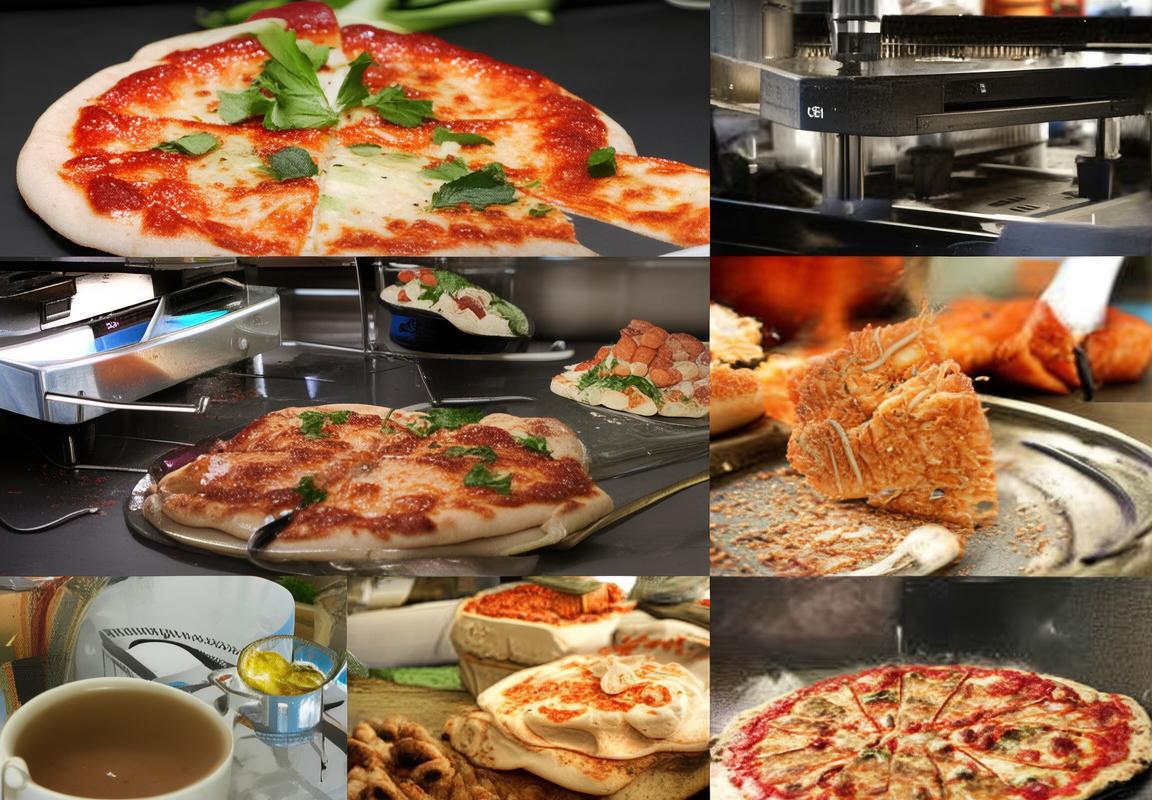
Future Outlook and Predictions for the RoHS-Compliant Pizza Maker Market
In the ever-evolving landscape of kitchen appliances, the demand for RoHS-compliant pizza makers has surged. The market is not only growing but also adapting to changing consumer preferences and technological advancements. Let’s delve into the future outlook and predictions for this niche market.
Consumer lifestyles are becoming increasingly fast-paced, leading to a greater interest in convenience cooking solutions. Pizza makers, with their ease of use and the ability to produce homemade pizza in minutes, are perfectly positioned to cater to this trend. The market is expected to see a rise in compact, multi-functional models that can also bake bread or cookies, appealing to those seeking versatility in their kitchen gadgets.
The integration of smart technology is another area where the market is poised for significant growth. Smart pizza makers that can be controlled via smartphone apps, offering recipes, cooking times, and even connectivity to order ingredients, are likely to gain popularity. This tech-savvy approach aligns with the expectations of today’s tech-savvy consumers.
Sustainability is a growing concern, and the pizza maker market is not immune to this shift. Eco-friendly materials and energy-efficient designs are becoming more common, as consumers seek appliances that are kind to the planet. Brands that can demonstrate a commitment to sustainability may find a competitive edge in the market.
Globalization has opened doors for pizza makers to reach international markets. However, this also means facing stricter regulations and standards. The RoHS directive, which restricts the use of certain hazardous substances in electrical and electronic equipment, is a significant hurdle for exporters. Despite this, companies that have navigated these challenges successfully are reaping the rewards of a global market.
In the United States, the pizza maker market is expected to see robust growth, driven by a strong culinary culture and a penchant for homemade meals. The market is segmented, with a significant portion of consumers opting for high-end, professional-grade pizza makers. As the market continues to expand, there’s an opportunity for mid-range brands to capture a larger share by offering quality products at more accessible price points.
Europe, on the other hand, is a mature market with a diverse range of players. Here, the focus is on innovation and product differentiation. The European market is particularly interested in pizza makers that can cater to specific dietary needs, such as gluten-free options. As health and wellness trends persist, this segment is likely to grow.
Asia, particularly in countries like China and Japan, is a region with immense potential for pizza makers. The Asian market is characterized by a growing middle class with disposable income and a fascination with Western cuisine. This creates an opportunity for pizza makers to tap into a market that is eager to embrace new culinary experiences.
The future of the RoHS-compliant pizza maker market is also tied to the evolution of materials and components. As technology advances, we can expect to see the use of more durable and sustainable materials, such as recycled plastics and biodegradable components. This not only addresses environmental concerns but also enhances the longevity and appeal of the products.
The rise of e-commerce has significantly impacted the kitchen appliance market, including pizza makers. Online sales are expected to continue growing, with more consumers turning to the internet for their shopping needs. This shift presents opportunities for exporters to leverage digital marketing and e-commerce platforms to reach a wider audience.
In conclusion, the future of the RoHS-compliant pizza maker market looks promising. With a focus on innovation, sustainability, and global expansion, the market is set to experience steady growth. Brands that can adapt to these trends and meet the evolving demands of consumers will be well-positioned to thrive in this dynamic industry.
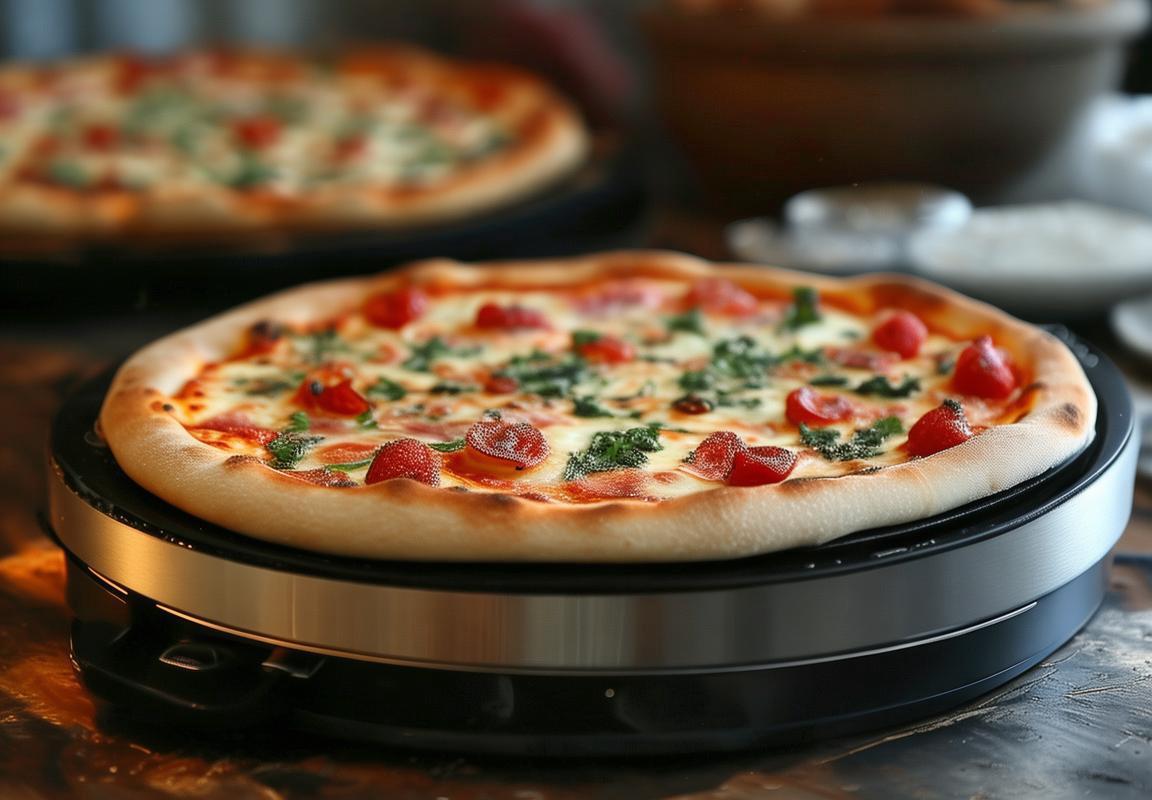
How to Ensure Your Pizza Maker is RoHS Compliant
Understanding the intricacies of the RoHS (Restriction of Hazardous Substances) directive is crucial for any exporter looking to enter the pizza maker market, especially in Europe and America. Ensuring that your pizza maker is RoHS compliant involves a meticulous process that touches on design, materials, and certification. Here’s a detailed look at the key aspects to consider:
Materials: The foundation of RoHS compliance lies in the choice of materials used in the construction of a pizza maker. Components such as plastics, metals, and glues must be free from certain hazardous substances. Nickel, cadmium, mercury, hexavalent chromium, polybrominated biphenyls (PBBs), and polybrominated diphenyl ethers (PBDEs) are the restricted substances under the RoHS directive. It’s essential to source materials that meet these stringent requirements.
Design Considerations: The design of a pizza maker must also comply with RoHS standards. This includes the placement of electronic components and the thermal properties of the appliance. For instance, the design should ensure that any heat-generating parts are insulated properly to prevent the release of harmful substances. Additionally, the design must allow for easy disassembly to facilitate the removal of components for recycling or replacement.
Certification and Testing: To confirm that your pizza maker is RoHS compliant, it must undergo rigorous testing and certification. This typically involves sending samples to an accredited laboratory for analysis. The lab will test for the presence of restricted substances and provide a certificate of compliance if the product meets the RoHS directive’s standards. It’s important to work with a lab that has experience in testing kitchen appliances.
Supply Chain Management: Ensuring RoHS compliance isn’t just about the final product; it’s also about the entire supply chain. Every supplier in your supply chain must adhere to RoHS regulations. This means maintaining detailed records of the materials and components used in the manufacturing process. Regular audits and supplier evaluations can help maintain compliance throughout the supply chain.
Documentation: Proper documentation is key to proving RoHS compliance. This includes technical files, material declarations, and test reports. These documents should be readily available and easily accessible for regulatory audits or customer inquiries. Keeping thorough and organized records is not only a legal requirement but also a good business practice.
Market Awareness: Being aware of the market’s expectations is crucial. Customers in Europe and America are increasingly conscious of environmental and health issues. They prefer products that are free from harmful substances. Therefore, marketing your pizza maker as RoHS compliant can be a significant selling point and differentiate your product from competitors.
Regulatory Updates: The RoHS directive is subject to change, and it’s important to stay informed about any updates or amendments. Regularly reviewing the directive can help you anticipate changes and adjust your compliance strategy accordingly. This may involve updating your materials specifications, revising your design, or seeking new certifications.
Customer Support: Providing customer support that includes information on RoHS compliance can be beneficial. Customers may have questions about the product’s materials or the compliance process. Being transparent and informative can build trust and loyalty.
Innovation and Sustainability: Embracing innovation and sustainability can also aid in maintaining RoHS compliance. Investing in research and development to create products that are inherently safer and more sustainable can future-proof your business. This can include using alternative materials that are safer for the environment and consumers.
By focusing on these key areas, you can ensure that your pizza maker meets the RoHS compliance standards required for export to Europe and America. It’s a detailed process that requires attention to detail and a commitment to quality, but the benefits of compliance can be significant, including a competitive edge in the market and peace of mind for both your business and your customers.
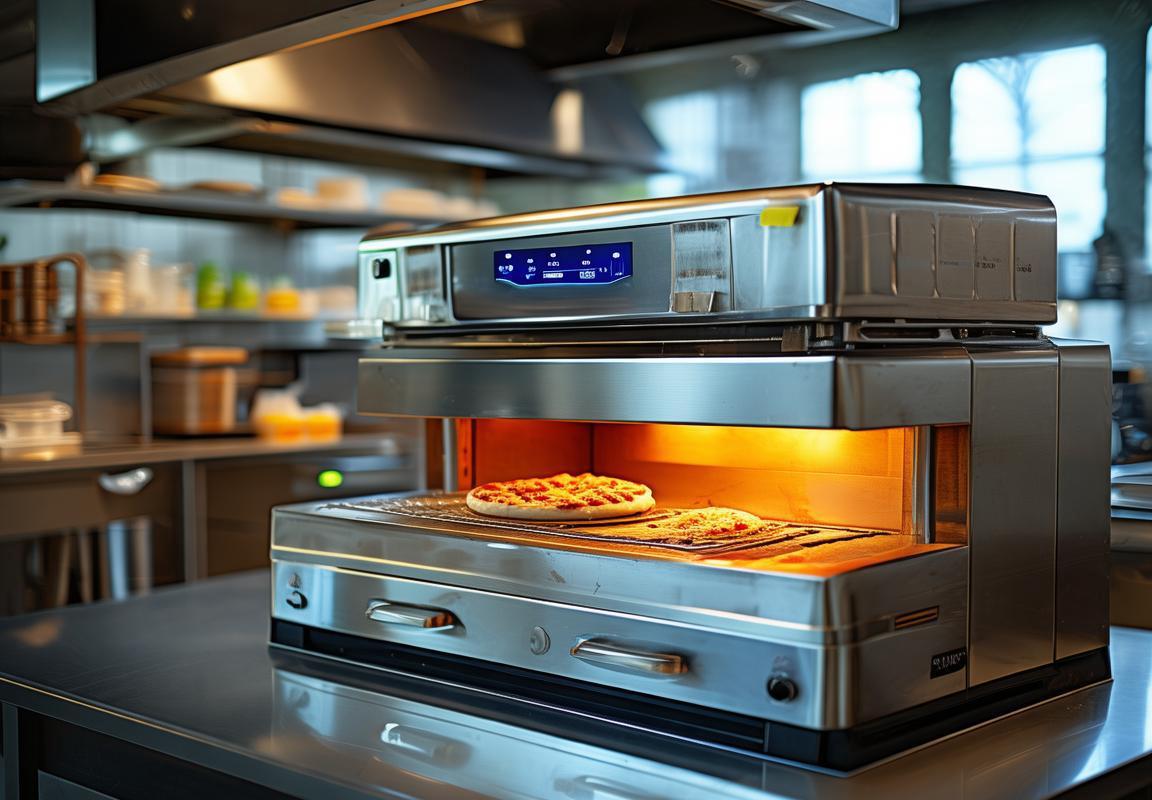
Conclusion
In reflecting on the journey of ensuring RoHS compliance for pizza makers, it’s clear that the path is not without its complexities. However, the opportunities that arise from adhering to these regulations are vast. From the meticulous selection of materials to the strategic approach to market expansion, each step in the process is a testament to the commitment to quality and environmental responsibility. The success stories of exporters who have navigated these waters serve as a beacon for those looking to enter the market. As we move forward, the future of the RoHS-compliant pizza maker market looks promising, driven by evolving consumer tastes, technological advancements, and a global trend towards sustainable practices. It’s a landscape where innovation meets regulation, and the result is a product that not only satisfies the palate but also upholds the highest standards of safety and environmental stewardship.